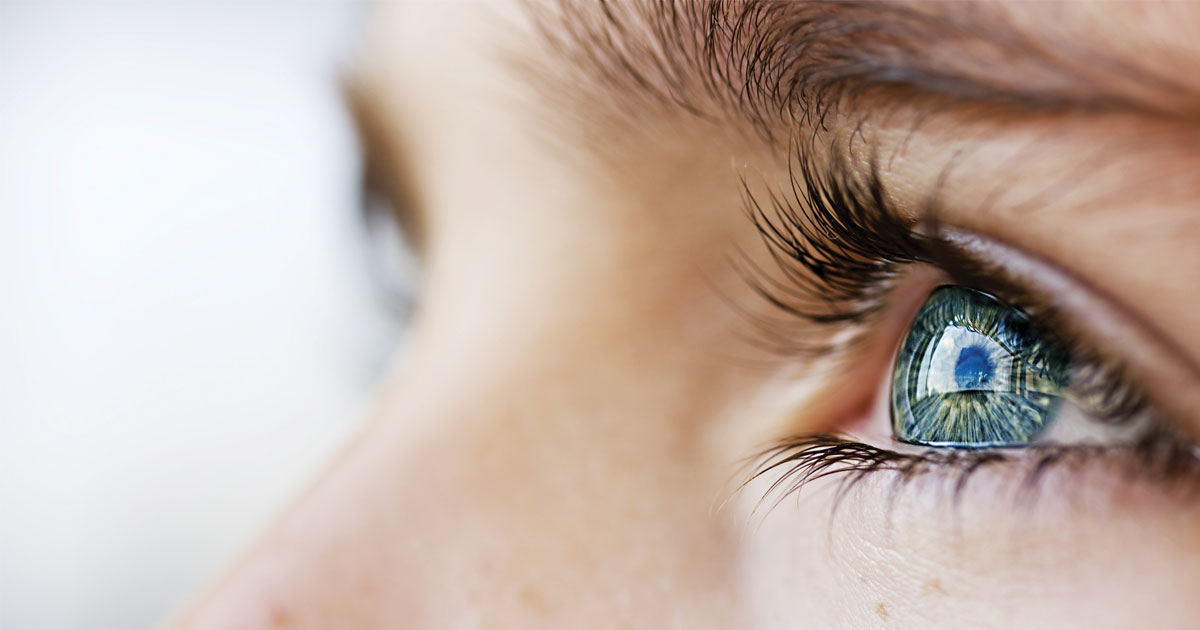BY KEITH BIGGS, O.D.
Last month, I wrote about Meibomian gland dysfunction (MGD), which is the most common form of dry eye, and what can be done to treat dry eye disease. What about preventing it to begin with?
Preventing the scratchy, burning and itchy sensation often associated with dry eye may be achieved by taking daily care of our lids with basic hygiene practices. We regularly wash our face, shower, brush our teeth and wash our hands, but, unfortunately, most of us do not take the same care of our eyelids. Caring for our lids on a regular basis, as children and adults, can go a long way to managing and possibly preventing MGD. In many cases, good lid hygiene is the first line of defense against MGD.
Most of us grew up with parents that made sure we washed our face and brushed our teeth. What’s the reason behind this? Simply put, to remove plaque and buildup from those areas. Without cleanliness of your teeth, you will increase your likelihood of cavities and gum disease. We must think of our eyelids in the same way. In order to prevent buildup around our eyelids (termed blepharitis and Meibomian gland dysfunction), we must get into a habit of good lid hygiene.
One of the worst things you can do for your general eye health is sleeping in makeup. I know, it’s difficult to remember to take it off and even more difficult after working a long day and lying down for a few minutes. However, leaving eyeliner and other cosmetics on can lead to Meibomian gland dysfunction and cause eyes to not function properly. Many makeup cleansers and facewashes contain certain ingredients that aren’t to be used around the lids, however, so make sure it’s safe before using. Ocusoft lid scrubs and lid spray is one that we use at Summit Eye Care that we feel is safe.
One of the most common habits that lead to dry eye disease is the growing trend of electronics, tablets, and computers. Studies show that while using these devices, blink rates decrease. Blinking activates the Meibomian glands in our eyelids to release and spread essential protective oils across the tear film on the eye surface. Partial and infrequent blinking are highly associated with reading and use of digital devices. Chronic use of digital devices impairs healthy gland function. Blink awareness and blink exercises can help our glands stay healthy without giving up our digital devices. To promote healthy gland function, follow these simple steps.
- Close your eyes, then squeeze your eyes closed, then relax the squeeze but keep your eyes closed.
- Open your eyes and repeat this sequence 5 times in a row.
- Perform 3-4 times per day.
- Associate this with an activity that you do routinely, such as the restroom, eating, or while waiting on the light to turn green.
This helps to prevent Meibomian gland dysfunction. Partial and incomplete blinks increase our risk for MGD and dry eye disease. One rule I tell patients is about the 20-20-20 rule. Every 20 minutes, take 20 seconds to look 20 feet away. This helps to decrease strain of our visual system, as well as awareness of healthy blinks.
It’s time to take care of our eyes as much as we do our teeth. Unlike teeth, you only get one pair of eyes!
Summit Eye Care has the latest medical equipment and treatments for dry eye disease. For more information or to schedule an appointment, please contact our office at 336-765-0960. The excellent staff of our dry eye center is waiting to assist you.


















